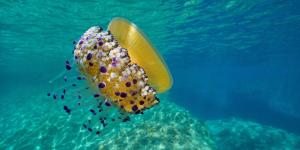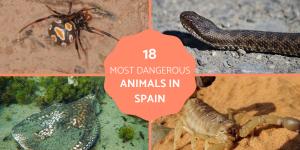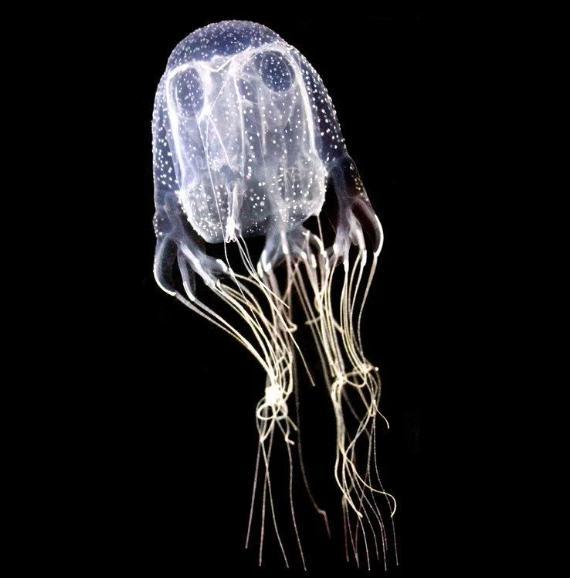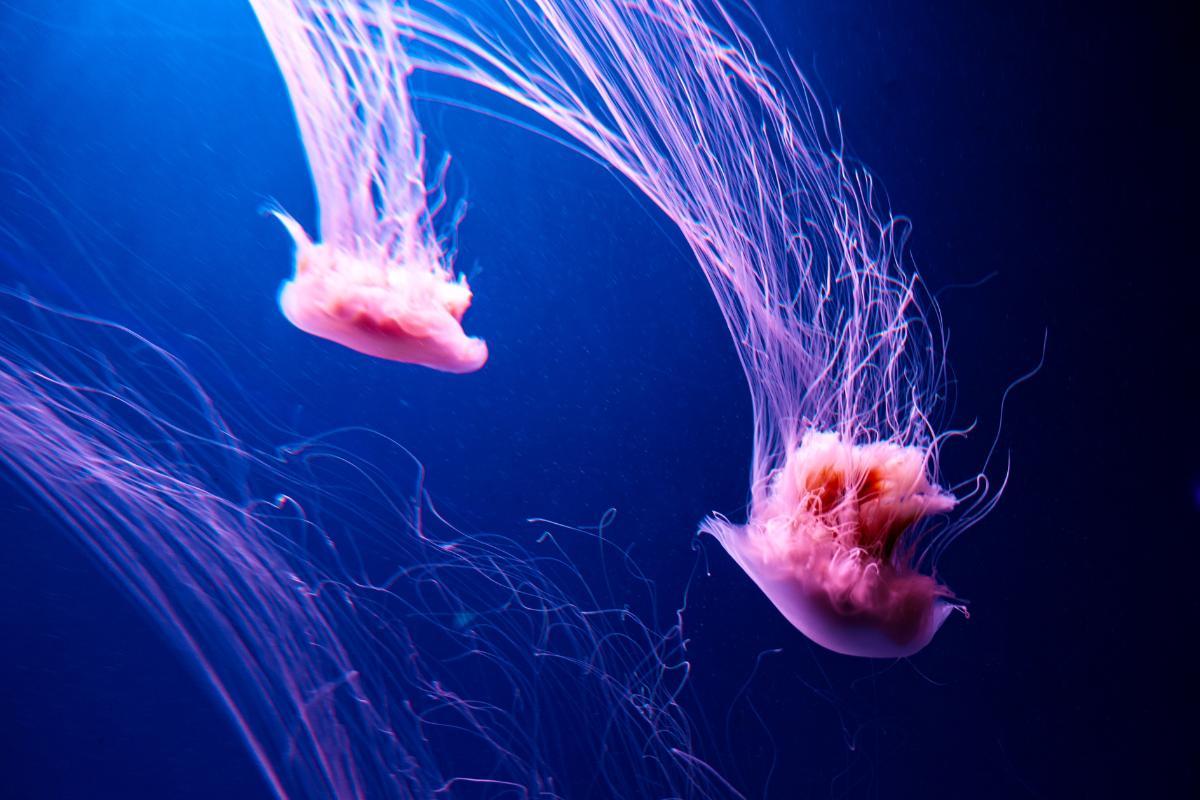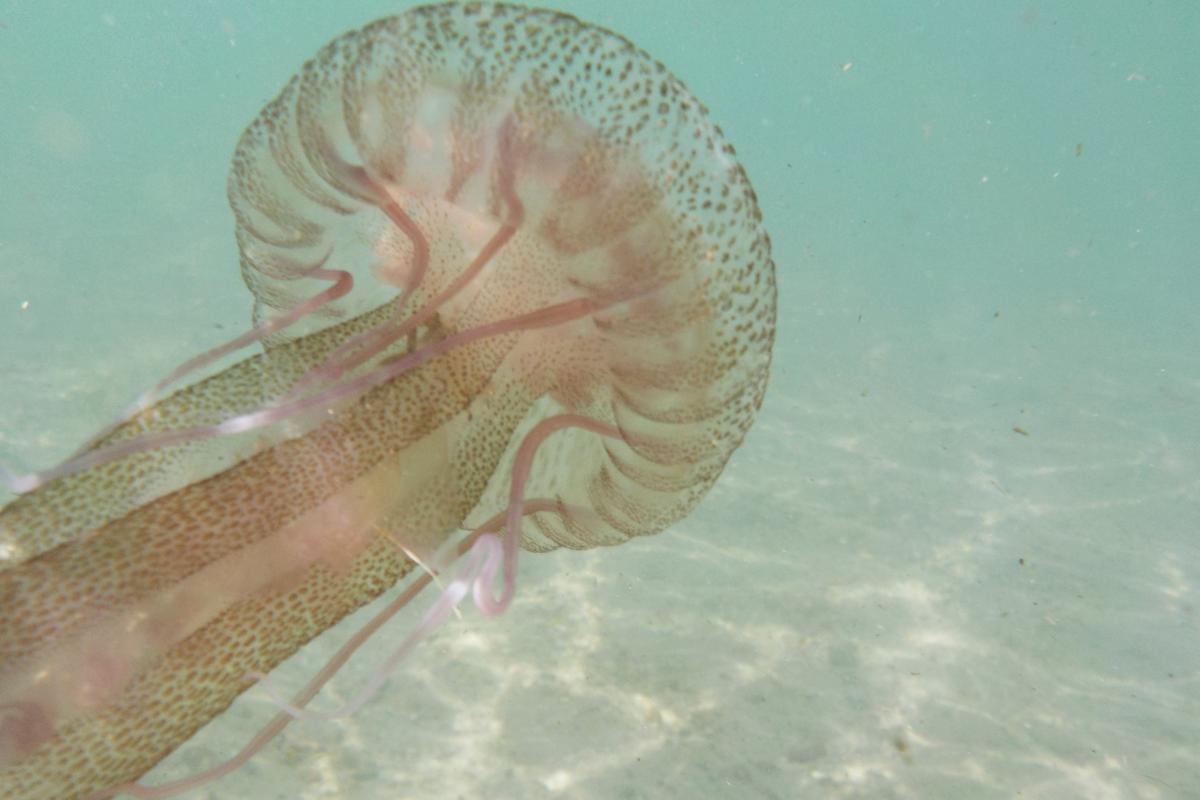World's Most Dangerous Jellyfish


Jellyfish are captivating and diverse marine creatures that belong to the phylum Cnidaria, which also includes corals and sea anemones. Jellyfish are known for their unique stinging cells called cnidocytes, which contain venomous structures. While many species are harmless and pose little threat to humans, others are renowned for their potent venom, which can be both mesmerizing and potentially dangerous.
In the following AnimalWised article, we explore the world's most dangerous jellyfish. Learn about their unique characteristics, deadly stings, and where they are found.
- Sea wasp (Chironex fleckeri)
- Irukandji jellyfish (Carukia barnesi)
- Four-handed cube jellyfish (Chiropsalmus quadrumanus)
- Southeast Asian sea wasp jellyfish (Chiropsalmus granulated)
- Lion's mane jellyfish (Cyanea capillata)
- Compass jellyfish (Chrysaora hysoscella)
- Luminescent jellyfish (Pelagia noctiluca)
- Warty sea wasp (Carybdea marsupialis)
- Cubozoan jellyfish (Tamoya haplonema)
- Portuguese Man o' War (Physalia physalis)
Sea wasp (Chironex fleckeri)
The sea wasp, a type of box jellyfish, is found in northern Australia and the Indo-Pacific region, including countries such as New Guinea, Cambodia, and the Philippines.
It is considered the most dangerous species of jellyfish in the world, having caused over 60 deaths in Australia alone, making it one of the deadliest jellyfish in the region.
The sea wasp has a box-shaped body, reaching a diameter of about 30 cm (12 inches), and tentacles that can extend up to 3 meters (10 feet) in length. Its venom is highly toxic, capable of causing severe and permanent damage, and can even be fatal. Victims of a Sea Wasp sting require immediate medical attention, as symptoms can escalate rapidly.
Did you know that jellyfish have a unique way of bringing new life into the ocean? Explore their incredible reproduction process in our other article.

Irukandji jellyfish (Carukia barnesi)
In second place in the ranking of the most venomous jellyfish in the world is the Irukandji jellyfish (Carukia barnesi), native to the marine waters of Australia.
This small jellyfish has a box-shaped bell with an approximate diameter of 2.5 cm (1 inch). Being transparent, it is difficult to detect. The sting of this species can cause a condition known as "Irukandji syndrome," which leads to intense pain, vomiting, cardiac arrest, and pulmonary edema. Without prompt treatment, the sting can be fatal.
One of the most frightening aspects of an Irukandji sting is the delayed onset of symptoms, which can occur anywhere from minutes to hours after the encounter.
Ever wondered how these creatures manage their breathing? Discover the unique ways jellyfish breathe in our other article.

Four-handed cube jellyfish (Chiropsalmus quadrumanus)
It is distributed throughout the waters of the western Atlantic, the Gulf of Mexico, and the Caribbean. Like many jellyfish, the Four-handed Cube Jellyfish is primarily carried by ocean currents, with limited ability to control its movement.
It also belongs to the group of box jellyfish, with a cubic-shaped, transparent bell about 14 cm (5.5 inches) in diameter. Their nematocysts are quite powerful, delivering a venom that causes pain, necrosis, and, in more sensitive individuals, heart failure. This jellyfish is especially dangerous for children.
Ever wondered how jellyfish get around? Dive into the mechanics of their movement and learn how they swim and drift through the water

Southeast Asian sea wasp jellyfish (Chiropsalmus granulated)
Although it has a wide distribution, the Southeast Asian sea wasp jellyfish (Chiropsalmus granulated) is most common in the waters of the Indo-Pacific and Southeast Asia.
Its bell has a somewhat rounded shape with muscle masses in the four corners. The bell measures between 3 to 5 cm (1.2 to 2 inches) in diameter and can have up to 9 tentacles in each corner. This jellyfish poses a significant danger to beachgoers and water sports enthusiasts in the region.
The Southeast Asian Sea Wasp is notorious for its extremely venomous sting, capable of causing severe pain and even death in humans. Its translucent body makes it difficult to spot in the water, increasing the risk of accidental encounters for swimmers and divers.
From stinging to snacking, jellyfish have unique dietary needs. Find out what they eat and how it impacts their survival in our other article.
Lion's mane jellyfish (Cyanea capillata)
Although it varies in size, the lion's mane jellyfish (Cyanea capillata) is considered the largest jellyfish species in the world. This jellyfish gets its name from its long, flowing tentacles that resemble a lion's mane.
It is found in the cold waters of the North Atlantic, North Pacific, and Arctic. While often found in coastal waters, the Lion's Mane Jellyfish is typically a creature of the deep, preferring colder, nutrient-rich waters.
The bell typically measures between 30 and 80 cm (12 to 31 inches) in diameter, though it can occasionally exceed 100 cm (39 inches). Its tentacles can extend up to 30 meters (98 feet).
While its venom is not among the most lethal, the jellyfish's large size and numerous tentacles mean it can deliver a substantial amount of venom. This can be dangerous to sensitive individuals, making prompt medical attention necessary.
Curious about the giants of the jellyfish world? Learn about the largest species in our other article.

Compass jellyfish (Chrysaora hysoscella)
This species, known as the compass jellyfish (Chrysaora hysoscella), is distributed in the northeast Atlantic and the Mediterranean Sea. The Compass Jellyfish gets its name from the distinctive V-shaped brown markings on its bell, which resemble the points of a compass.
It has a bell with a diameter ranging from 15 to 25 cm (6 to 10 inches), is translucent yellowish in color with a pattern of dark stripes on the upper part, and features three groups of eight tentacles, totaling 24. Lacking the ability to swim against strong currents, the Compass Jellyfish is often carried along by ocean waters, making it a common sight in coastal areas.
Although there are no recorded fatalities, its sting can cause intense pain, skin rashes, and difficulty breathing, making it one of the most dangerous jellyfish in the world.
Curious about what makes up these fascinating creatures? Explore the different parts of a jellyfish and how they work together in our other article.

Luminescent jellyfish (Pelagia noctiluca)
The luminescent jellyfish (Pelagia noctiluca) is a relatively abundant species in the Atlantic and Mediterranean seas. With no means of propulsion, the Pelagia noctiluca is carried by ocean currents, often forming large blooms.
It features a hemispherical bell, four oral tentacles, and 16 marginal tentacles. The bell is dotted with warts that contain cnidocysts, specialized cells used for stinging. Pelagia noctiluca is known for being one of the most venomous jellyfish in the world. Its sting can cause significant damage to the skin, leading to open wounds that are susceptible to infection. Additionally, its venom can result in respiratory and cardiovascular issues.
Intrigued by the diversity of jellyfish? Discover the different types and their unique characteristics in our other article.

Warty sea wasp (Carybdea marsupialis)
The warty sea wasp (Carybdea marsupialis), also known as the Mediterranean sea hornet, is a species of box jellyfish native to the Mediterranean Sea. The jellyfish's name comes from the small, wart-like structures on its bell, giving it a distinctive appearance.
It features a cube-shaped bell and is relatively small, with a diameter of about 3 cm (1.2 inches). Despite its size, the Warty Sea Wasp is a formidable predator, using its venomous tentacles to capture prey.
Each corner of the bell has tentacles that extend around 30 cm (12 inches). The bell is adorned with warty formations that can be white or yellowish. While not one of the deadliest jellyfish, its sting is quite painful and can be dangerous, making it important to seek medical attention if stung.

Cubozoan jellyfish (Tamoya haplonema)
The cubozoan jellyfish (Tamoya haplonema) is found throughout the Atlantic Ocean, from Argentina to the United States, including the Gulf of Mexico.
Unlike many jellyfish that rely on simple light sensors, the Tamoya haplonema boasts complex eyes capable of forming images. This advanced vision helps them hunt prey with precision.
It has a cubic shape and is transparent, often displaying some shiny tones. The jellyfish features four long tentacles. Although its venom is not fatal, it is highly irritating and can cause cramps and other general symptoms. Affected individuals should seek medical treatment due to the severe stinging effects.

Portuguese Man o' War (Physalia physalis)
Found in the warm waters of the Atlantic, Pacific, and Indian Oceans, including the Caribbean Sea and parts of the South Pacific.
It has a distinctive, gas-filled bladder (or pneumatophore) that can be blue, pink, or purple, and long, trailing tentacles that can extend up to 30 meters (98 feet) in length. The Man o' War uses its gas-filled float as a sail, allowing it to be carried across vast distances by the wind.
The venom is highly toxic and can cause intense pain, rash, and irritation. In severe cases, stings can lead to systemic reactions, including difficulty breathing, heart problems, and, rarely, death. Immediate medical treatment is recommended if stung.
Not all jellyfish are dangerous! Discover which species are sting-free and learn about the least harmful jellyfish in our other article.

If you want to read similar articles to World's Most Dangerous Jellyfish, we recommend you visit our Facts about the animal kingdom category.
- Animal Diversity Web. (2020). Available at: https://animaldiversity.org/
- Marambio, M., Ballesteros, A., López-Castillo, L., Fuentes, V., & Gili, JM (2021). Identification guide for jellyfish and other gelatinous organisms.

